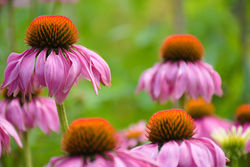Winter Weeding: The Secret to a Weed-Free Garden in Spring
- Lars Wildes

- Feb 15
- 3 min read
Updated: Feb 24
Most gardeners take a break from weeding in winter, assuming that the cold will take care of the problem. Unfortunately, many weeds are more resilient than they appear. If left alone, they can establish strong root systems and spread their seeds, creating a bigger headache when spring arrives.
In this post, we’ll cover everything you need to know about winter weeding—why it’s important, the best methods, and even some potential downsides to consider. Plus, we’ll include a helpful video tutorial so you can see these tips in action!
Why Weed in Winter? (The Advantages)
Winter weeding might not be the first thing on your gardening to-do list, but here’s why it should be:
1. Prevents Early Spring Weed Growth
Many weeds, such as chickweed and bittercress, thrive in cooler temperatures and start growing before your crops or flowers. Removing them in winter ensures they don’t get a head start in spring.
2. Easier to Remove Weeds
In winter, soil is often softer due to moisture from rain or snow. This makes it easier to pull weeds out completely, including their roots, reducing regrowth.
3. Reduces Weed Seeds in the Soil
Weeds that survive winter will produce seeds that spread quickly in warmer months. Removing them early stops them from reproducing and keeps your garden soil healthier.
4. Less Work in Spring
Spring is already a busy time for gardeners—planting, mulching, and pruning. By tackling weeds in winter, you save yourself time and effort when the growing season begins.
Disadvantages of Winter Weeding
While winter weeding has many benefits, there are a few things to consider:
Cold Weather Challenges: Working in the garden during winter can be uncomfortable, especially in frost or heavy rain.
Dormant Weeds May Not Be Visible: Some weeds die back in winter, making it hard to spot them until they regrow.
Soil Disruption: Disturbing soil in winter can expose it to erosion, especially if your area experiences heavy rain or wind. Using mulch can help prevent this.
Best Methods for Weeding in Winter
If you’re ready to take on winter weeding, here are the most effective methods:
1. Hand Pulling
For smaller areas, hand pulling is the best way to remove weeds entirely. Make sure to get the whole root system to prevent regrowth.
2. Hoeing
Using a hoe can help cut weeds at the soil level. This is especially useful for young weeds that haven’t developed deep roots yet.
3. Mulching
Covering the soil with a thick layer of organic mulch (such as wood chips, straw, or compost) prevents weeds from sprouting and keeps the soil protected from harsh weather.
4. Flame Weeding
In frost-free areas, a flame weeder can be used to kill weeds without chemicals. This method is quick and effective, but should be used with caution near dry plants or mulch.
5. Cover Crops
Planting cover crops like clover or winter rye helps suppress weed growth while also improving soil health. These plants compete with weeds for nutrients and space, naturally keeping them at bay.
Winter weeding might not be the most glamorous garden task, but it’s one of the most effective ways to keep your garden healthy and weed-free. By taking a proactive approach now, you’ll set yourself up for an easier and more productive spring.
Check out our video below for a step-by-step guide to winter weeding! If you found this post helpful, leave a comment and let us know your best gardening tips.









Comentarios